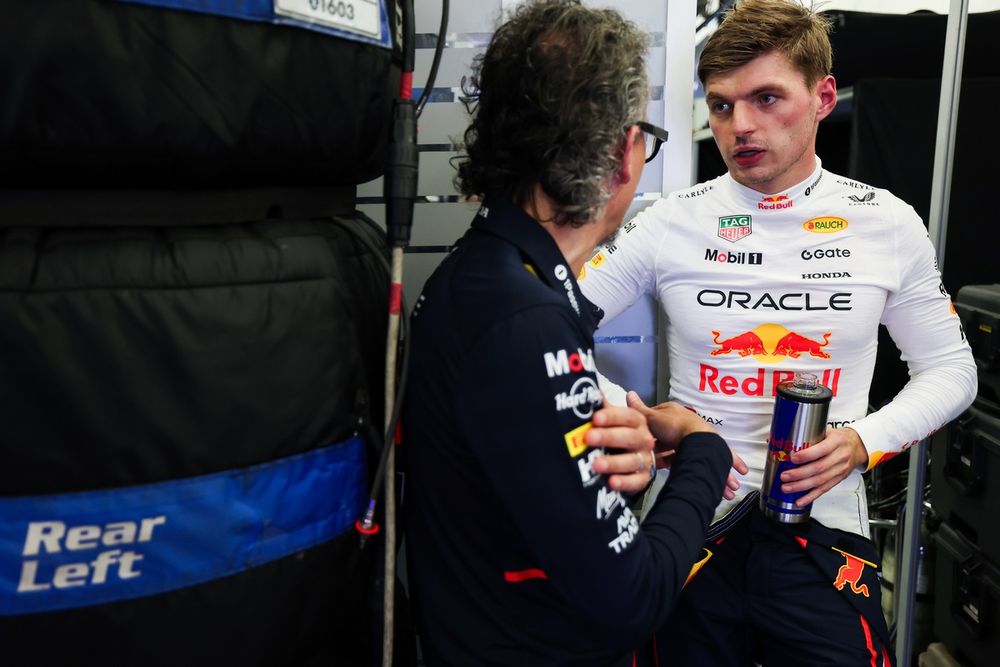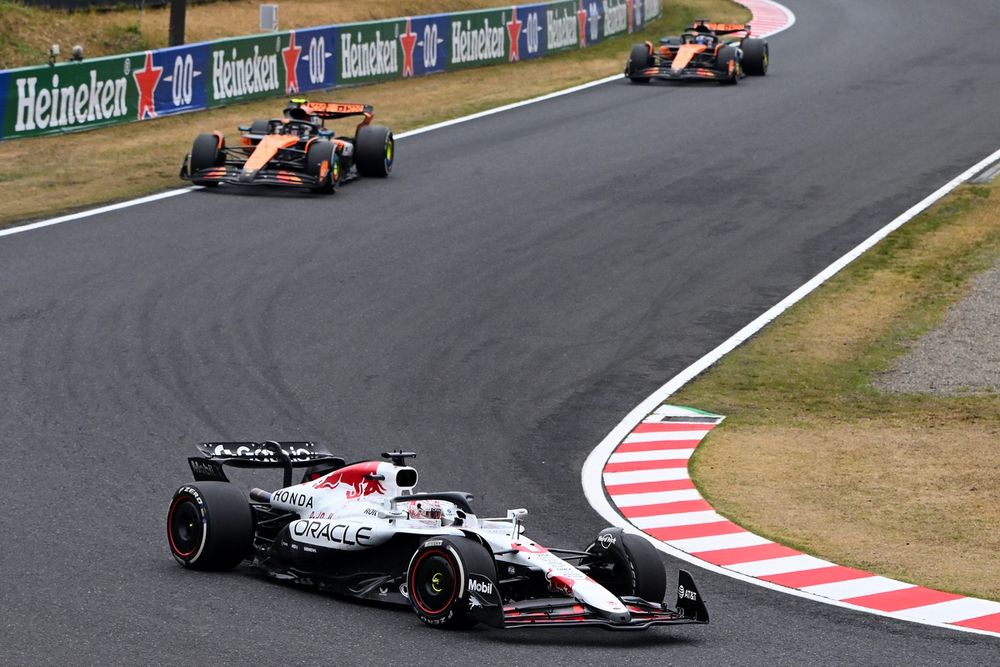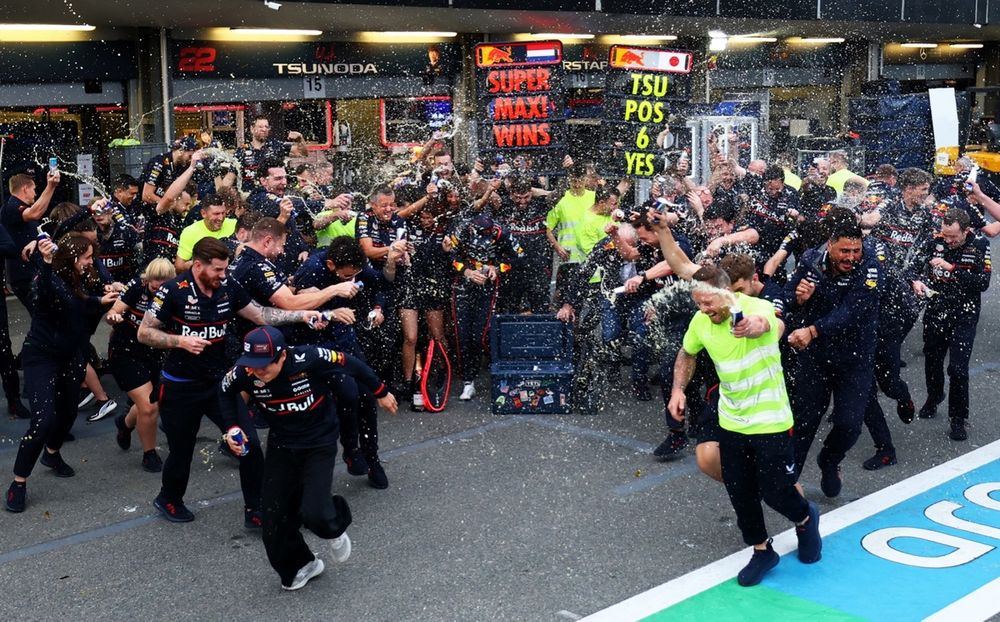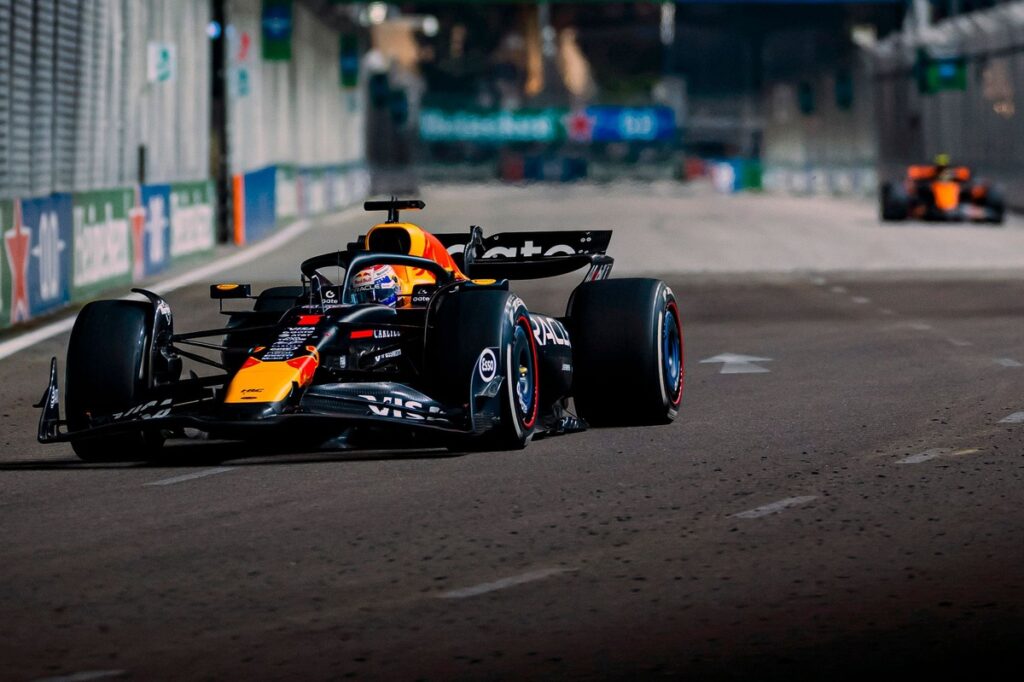Now that Red Bull has passed the high-downforce test in the Formula 1 Singapore Grand Prix, it’s clear that its progress over recent weeks hasn’t been limited to just one type of circuit.
Of course, the Circuit of the Americas up next will pose a completely different challenge with its many medium-speed corners – the very type of corners that team boss Laurent Mekies pointed out to at Zandvoort, where he said the team was “killed by McLaren”.
Success is therefore not guaranteed everywhere, but Red Bull has undeniably found something after the summer break. Verstappen has since scored more points than any other driver on the grid, with a consistent run of results: P2, P1, P1, and P2.
The key question is what that ‘something’ actually means. As Andrea Stella pointed out, one factor is that Red Bull has continued to develop its car longer than McLaren. Mekies’ squad introduced a new floor in Monza and a new front wing in Singapore – which chief engineer Paul Monaghan said is likely the last significant upgrade of the season. McLaren, by contrast, has shifted its full focus to 2026 early on, although the approaches of both teams make sense.
McLaren’s advantage was large enough that it could afford to move extremely early to the next-generation of cars. Red Bull, however, found itself in a completely different situation. For a long time, the team was “looking at two different watches”, as Christian Horner described it – meaning the correlation between the virtual world and the real track was off. That problem needed to be fixed first; otherwise, the team would head blindly into 2026 and risk another wrong turn.
The best way to validate those tools was through the current car, making it entirely logical for Red Bull to keep developing the RB21 for longer.
A new philosophy at Red Bull – and Mekies’ role in it
Laurent Mekies, Red Bull Racing Team Principal
Photo by: Sam Bloxham / LAT Images via Getty Images
The recent upgrades have delivered exactly what was expected from them, which is good news on two fronts: the on-track performance has improved, but more importantly, it confirms that the correlation between Red Bull’s tools and reality is slowly getting better.
“It’s extremely important that we validate with this year’s car [so] that our way of looking at data is correct, and that our way of developing the car is correct,” Mekies said. “That will give us confidence in the winter for next year’s car.”
As for the current car, Verstappen admitted in Singapore that while the new floor helped, it was “not the full reason” behind Red Bull’s resurgence. Asked what the main factor was, the world champion answered: “A different philosophy.”
He couldn’t go into details, but hinted at two key elements. The team now starts Fridays with a more solid baseline, requiring only fine-tuning rather than a full set-up overhaul after the first practice sessions. And, more importantly, Red Bull became better at finding the RB21’s operating window – no matter how narrow that might be. Helmut Marko added that the new floor slightly enlarged the window, but it’s more significant that the team made steps operationally.
Although no team member would reveal any more details about how that works behind the scenes, Marko did say: “Our engineers are experienced, and Max is an experienced driver as well by now. We rely on them a lot more than we did before. We don’t blindly follow what the numbers tell us anymore.”
It applies to the preparations and the execution throughout a race weekend. The latter was seen in Monza, where several senior team members – including technical director Pierre Wache – suggested running more downforce, but Verstappen’s opinion ultimately prevailed.

Max Verstappen, Red Bull Racing, Laurent Mekies, Alpine
Photo by: Mark Thompson – Getty Images
Mekies’ influence should not be underestimated in this. Every Thursday before a grand prix, he sits down with Verstappen for around 20 minutes to discuss all options for the upcoming weekend, including technical matters. It’s one of the benefits of having a team boss with a strong engineering background, although Mekies himself remains extremely modest about it during his media appearances.
“My contribution is still zero,” he said, “and I say it with the same seriousness as I told you in Monza. The improvement in performance is basically due to the work of everyone in the team, with extremely strong and clear inputs from Max.”
Red Bull’s top management appreciates that humility, but when Autosport put Mekies’ words to Marko, the Austrian laughed: “Zero contribution? That’s absolute rubbish!
According to Marko, Mekies is playing a vital role – not just in communicating with Verstappen, but also in connecting with engineers and technical leaders Wache and Monaghan. Verstappen himself praised Mekies’ ability to “ask the right questions”, as Red Bull now has someone at the very top who can challenge the technical team.
Did the RB21 have this potential in the first half of the season?
That leaves the question: was Verstappen right – did the RB21 have this potential for longer? It’s a ‘what if’ question and almost impossible to answer, but there are some clues in Verstappen’s wins earlier this season.
His victory in Japan was mostly down to a good qualifying lap and the difficulty of overtaking at Suzuka, but the Imola win was more revealing. Verstappen impressed with an outside overtake on Oscar Piastri in the opening corners – yet what came after that mattered more. He was able to match the McLarens for pure race pace and even extended his medium-tyre stint longer than Piastri.

Lando Norris, McLaren, Oscar Piastri, McLaren, Max Verstappen, Red Bull Racing
Photo by: Clive Mason/Getty Images
At the following race, Verstappen admitted to Dutch media that he didn’t fully understand why things had suddenly clicked – but that perfectly fits his recent comments. The RB21 had the potential at times; but the team rarely managed to extract it in the first half of the season.
Imola was one of the rare occasions when Red Bull hit the sweet spot, and now, after months of accumulated learning, the team understands the car better. That in itself is no surprise, as the improved understanding is partly based on all failures along the way – making it, above all, a natural development.
When Autosport asked Mekies whether he agreed with Verstappen that this potential had been in the Red Bull car for longer, he gave a diplomatic but interesting answer.
“Let me put it this way: I think everybody has been working extremely hard in Milton Keynes from race one to now, and never giving up on trying to unlock the potential of that car,” he said.
“It is fair to say that the progress in the last few weeks has been quite spectacular, and it’s credit to everyone, again, back at home that never gave up. And it’s credit to Max who, with his sensitivity, has been pushing us to explore different avenues, and finally we found an avenue that unlocked a bit of performance.”
It was carefully worded for a reason. Although Horner is gone, many other team members are still there, which explains why Mekies cleverly avoided directly agreeing that the performance had always been there.

Max Verstappen, Red Bull Racing
Photo by: Mark Thompson – Getty Images
By first praising the team’s hard work, he avoided any criticism of the team members that were there at the beginning of the season – before subtly confirming Verstappen’s theory when talking about “new avenues”.
Finally, Mekies stressed that there’s no point in looking back, as the focus within the team has to be on the future: “There is no single silver bullet. There has been a good flow of updates, and there have been different ways to run the car.
“Altogether it seems that we have a competitive package on most tracks, but it’s very difficult to wind back and say, with the upgrades at the beginning of the year, where would you be? We are not looking back, we are looking forward.”
We want to hear from you!
Let us know what you would like to see from us in the future.
Take our survey
– The Autosport.com Team
Read the full article here

